Béranger Laymond
Béranger Laymond: a Baroque formalism
Originally focused on sculpture and installation, Béranger Laymond has recently integrated painting into his work. His use of the pictorial medium is clearly rooted in abstract and formalist traditions, those of deconstructivist and minimalist avant-garde artists who, since the 1960s, have been challenging easel painting, and the painted image, to explore materialist and abstract facets of the “object” painting, which takes up space in a world. The abstract formalism in his work is imbued as much with mannerist sensuality of line as dynamic composition and joyous chromatics, recalling figurative forms, albeit in allusive, fragmentary ways. This Baroque formalism suggests the bountiful, hybrid world of Frank Stella, whose minimalist art, starting in the late 1970s, turned towards large, very colorful compositions with evocative literary titles, in which painting occupies space with the help of collage and the combined use of various materials; a type of pictorial, monumental architecture able to encompass the spectator, producing an emotional discharge with many possible references. The integration of painting into Laymond’s work can be seen in a similar light.
While the artist begins his work in the small, raisin format (50x65), he’s soon faced with a need for large formats, loose canvases, not mounted on frames, suspended like hangings directly on the wall with the help of carabiners. Sometimes worked on both sides, one canvas might be linked to another, or displayed on an object made of twisted metal. A volume might also extend along the ground, with metal or belts, in a language formally echoing that of painting. For Laymond, painting is hybrid, unfolding in physical space, overtly recalling concerns related to installation, objects and sculpture. On the other hand, work on the painted surface in acrylics veers towards abstraction, that is, its primary concern is not figuration, with a subject to depict, but a matter of color and composition. With a formalist approach, gesture, form, and color are layered efforts, an alphabet, a fully autonomous language.
The Baroque formalist displays a taste for the art of combination and heterogeneity. The notion of pleasure and chance is primordial, as if painting were magical thinking: one thing leads to another, an accident gives rise to an unpredicted form. Testament to this pleasure of making is seen in the artist’s manipulation of tools, work in writing and the effects of materials. Out of this heterogeneity come ambivalent compositions. As a formalist, Laymond plays with the notion of the flat and level surface, all while working on effects of depth and opening up space. The artist’s palette is equally heterogeneous, mixing shades of black and gray with vibrant colors: blues, greens, yellow, pinks—vivacity expressing the joy of making. As work with materials tends to play with textures, acrylics can mix with sand, or be covered in masking latex or mylar sheets with textured effects.
Within this formal language, one finds multiple references to ancient and contemporary art, which the artist adopts less in figurative patterns as in formal writing and the gestural, like zig-zags made with a comb, borrowed from the work of Christina Quarles, who the artist has often admired. But that’s not all. References to cinema are also numerous. This is true as much in his painting as his work in installation and sculpture. Abstract at first glance, his art bears elements that evoke the real, read as figurative allusion. Here, a landscape forms, or horizon lines, trees, clouds, water. Elsewhere a piece of body, a vaguely organic, cellular form.
The most evocative references are to cinema and the sacred, taking the form of “object” paintings that go beyond the question of the flat surface to explore 3D. Laymond deploys a range of large canvases staggered in space, suspended likes sheets, some existing beside forms, in metal or with belts, on the ground. In this type of hybrid painting, dual references to cinema and the sacred are found, above all, in the movement of the body of the spectator in the immersive space and in reference to the big screen. The sacred here is understood through the lens of minimalist, monumental American art, that of Sol Le Witt, but also of Richard Serra, a major reference for Laymond. The immersive, monumental aspect speaks to his Judeo-Christian background, touching on something like the silence of the church, an atmosphere, a decorum, with architectural elements punctuating space. Exploring the possibilities of painting in the evocative and contemplative power of this type of environment is the most interesting attribute of Laymond’s approach. It’s a joyful synthesis of all the aspects of his work, painting, installation and sculpture combined.
Translation: Elaine Krikorian
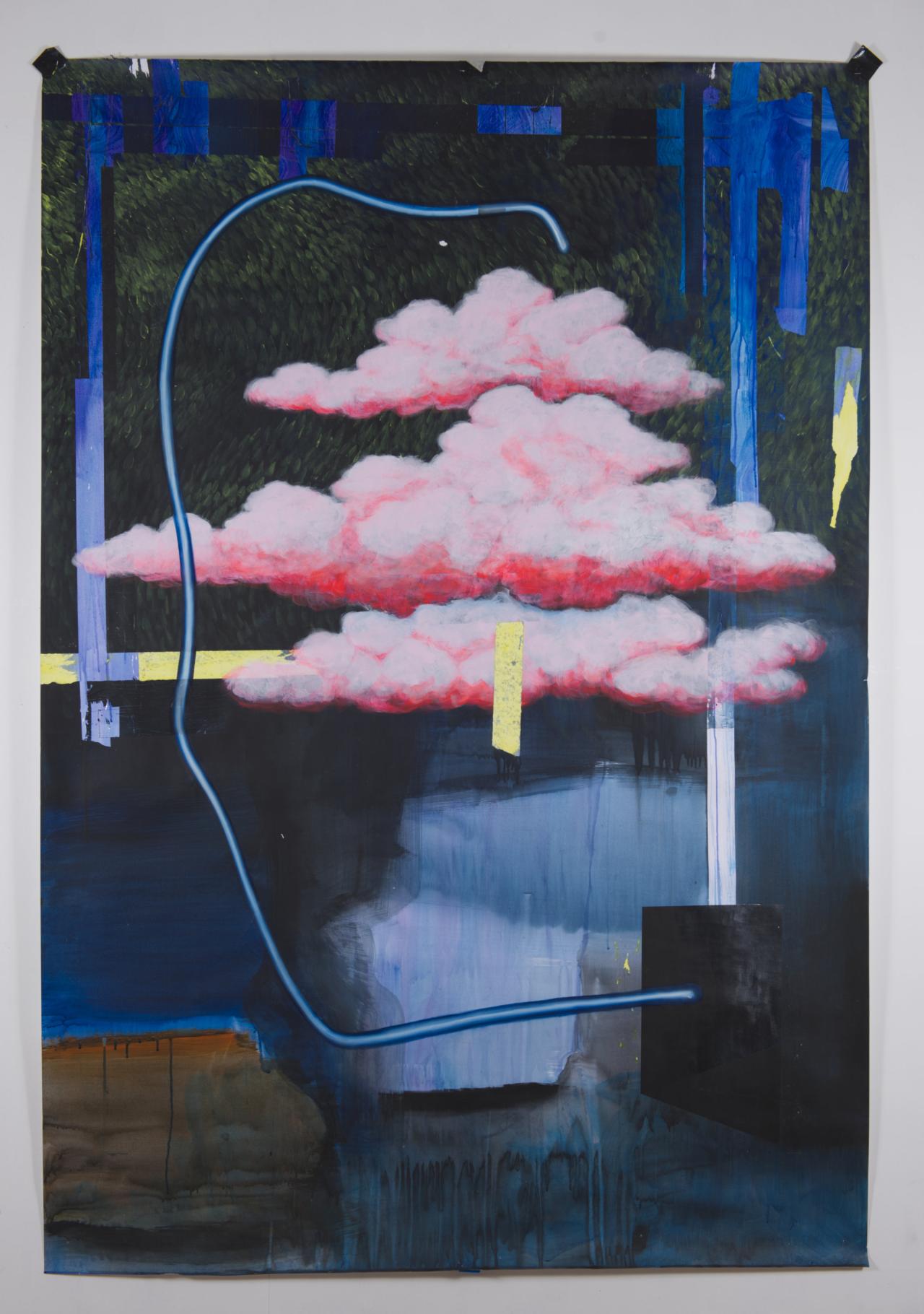
Vagues de vapeur series
Acrylic on paper, 150 x 200 cm
Photo credit: Ludovic Zeller
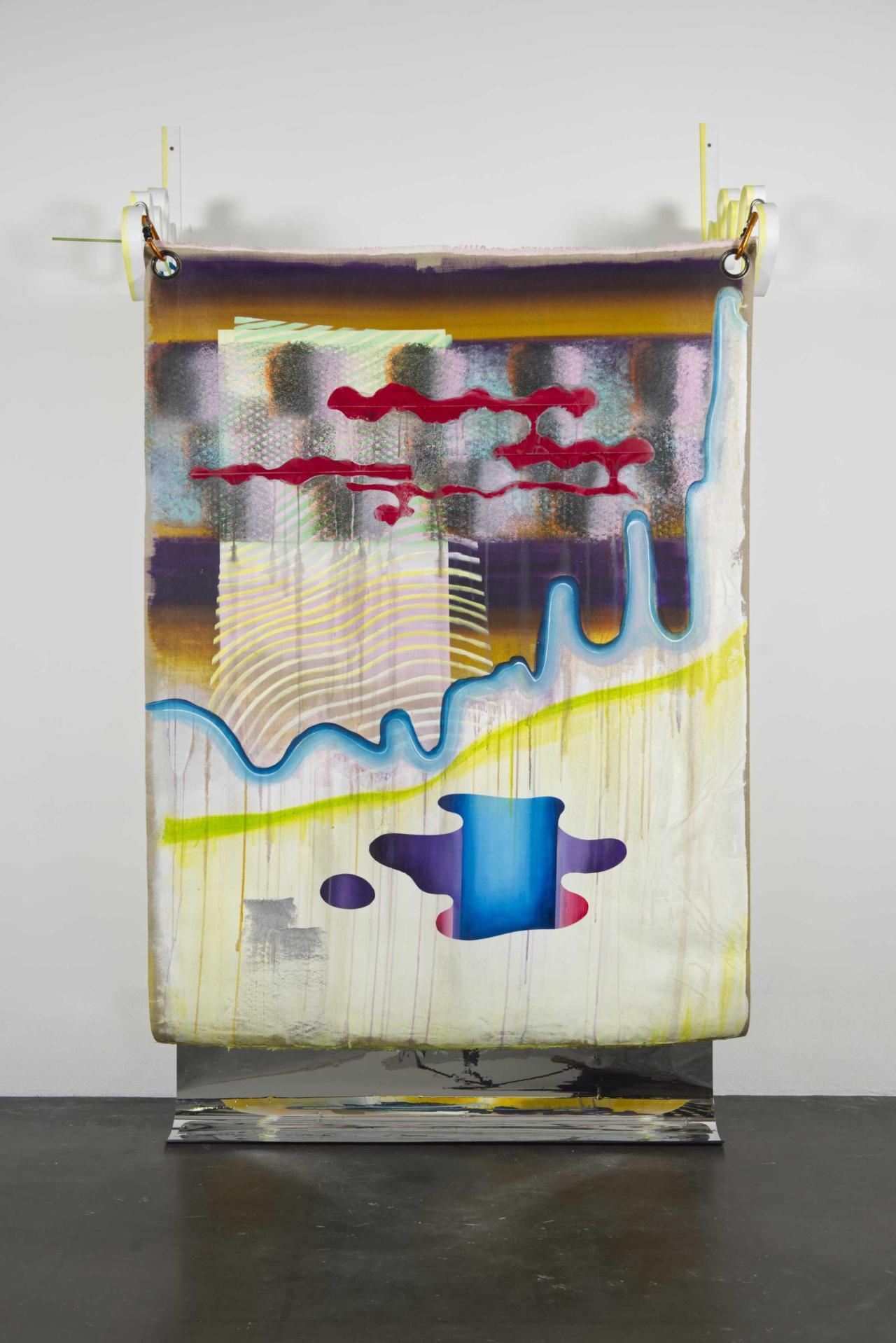
Never Look What You Can't series
Acrylic and various materials on linen canvas, mylar, metal, snap hooks, 150 x 110 cm
Photo credit: Ludovic Zeller
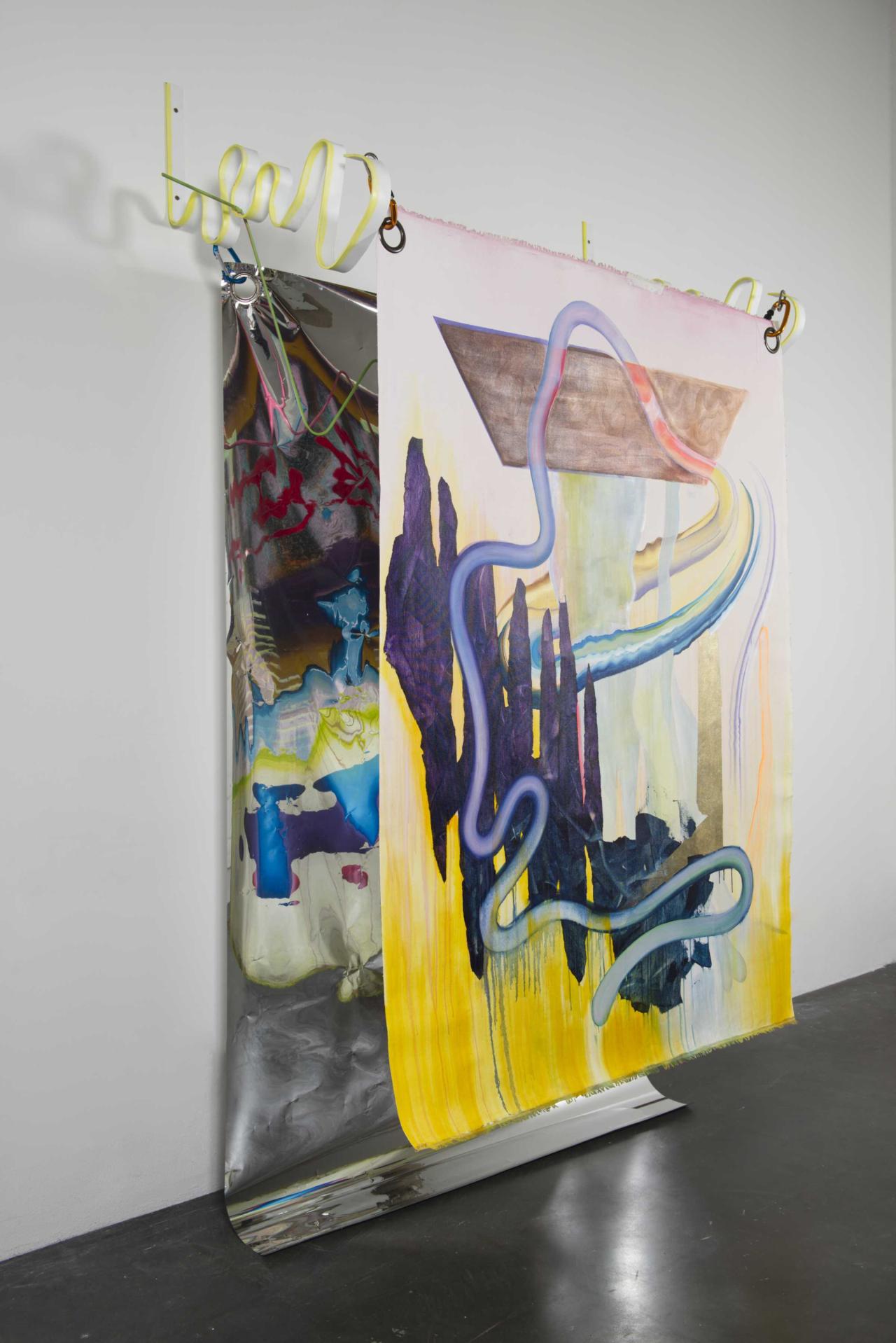
Photo credit: Ludovic Zeller
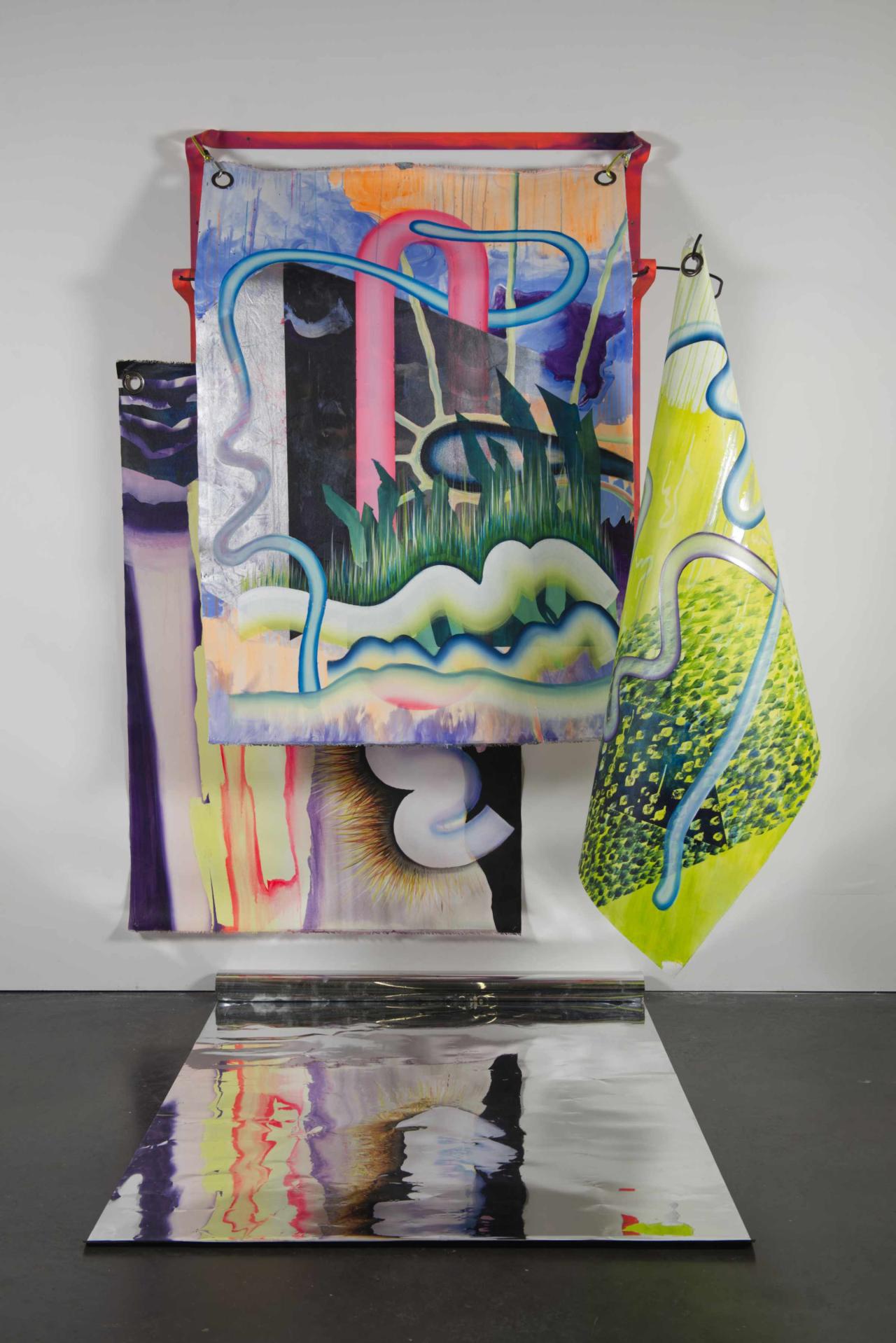
Never Look What You Can't See series
3 canvases including 2 double-sided on a rack, acrylic and various materials on linen canvas, mylar, metal, snap hooks, 120 x 265 cm each canvas
Photo credit: Ludovic Zeller
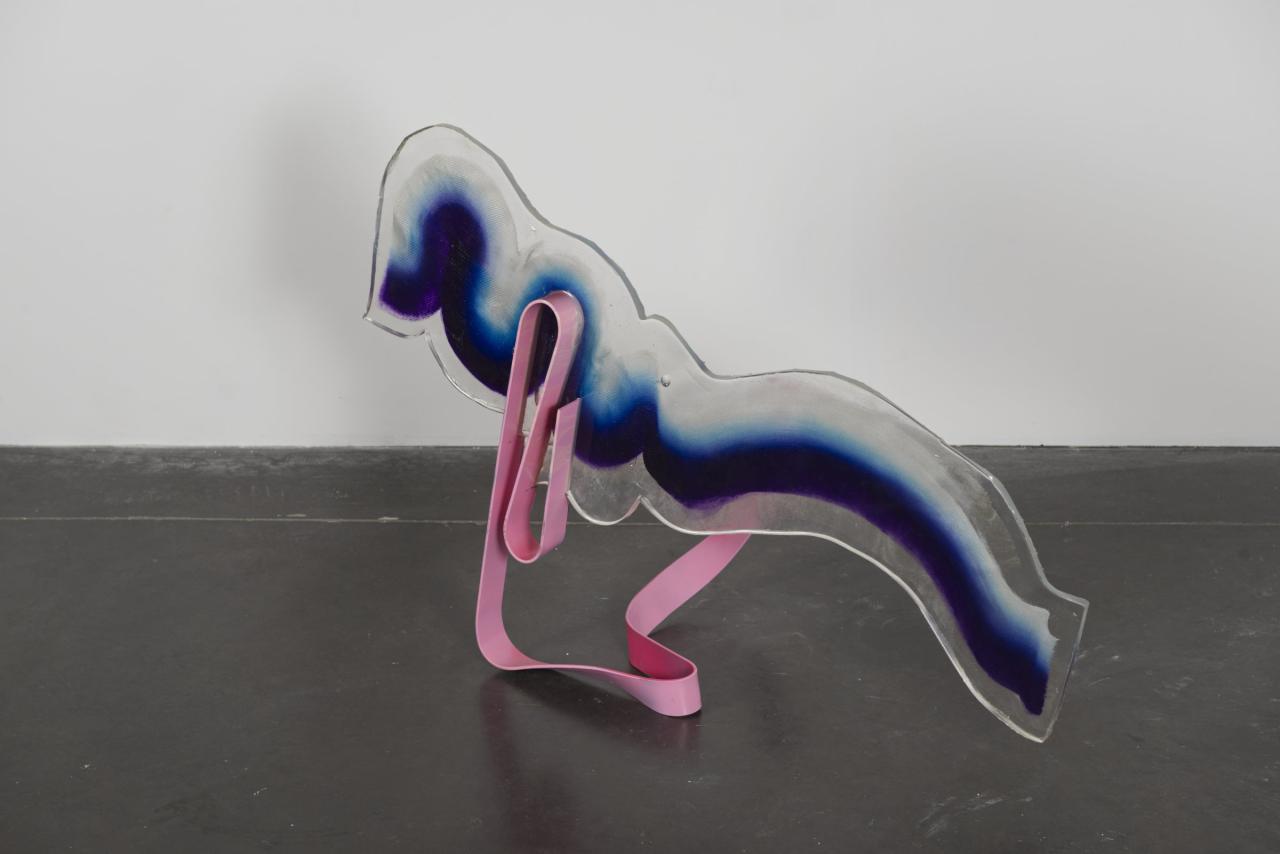
etal resin and acrylic paint, 100 x 40 x 50 cm
Photo credit: Ludovic Zeller
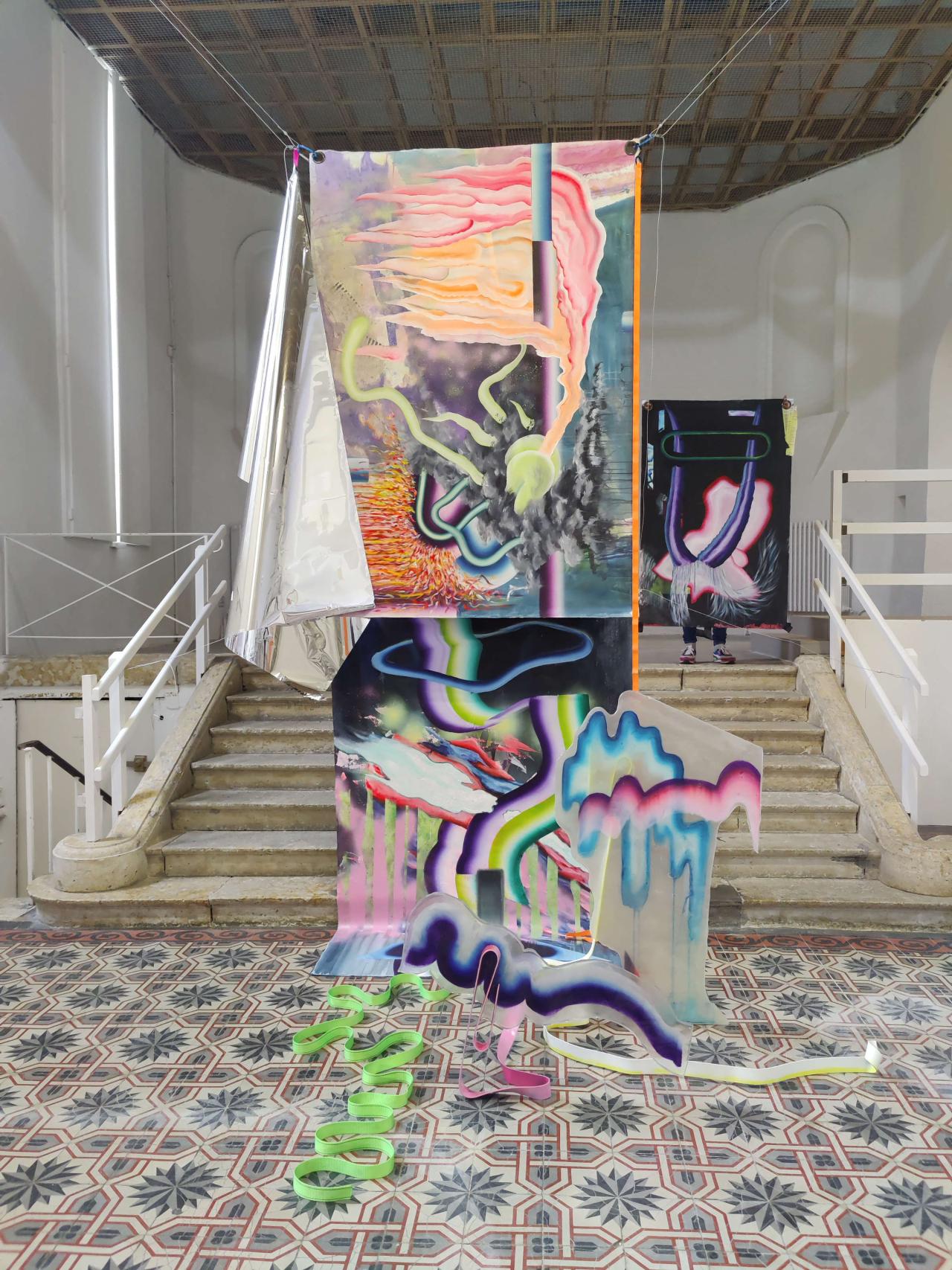
Photo credit: Béranger Laymond